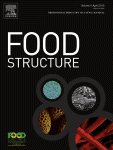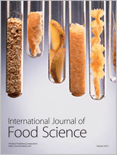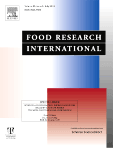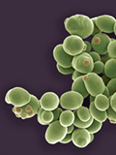
FOOD SCIENCE AND BIOTECHNOLOGY
Scope & Guideline
Pioneering Discoveries in Food Science and Microbiology
Introduction
Aims and Scopes
- Food Safety and Quality Control:
Research in this area explores methods for ensuring food safety, including microbiological safety, detection of contaminants, and quality assessments of food products. - Functional Foods and Nutraceuticals:
The journal publishes studies on the health benefits of food components, including bioactive compounds, probiotics, and plant-based nutraceuticals. - Food Processing Technologies:
Innovations in food processing, including novel extraction methods, preservation techniques, and the development of new food products, are key focuses. - Food Chemistry and Biochemistry:
This area includes research on the chemical and biochemical properties of food components, interactions during processing, and the impact on health. - Sustainable Food Systems:
The journal emphasizes research that promotes sustainability in food production and processing, addressing challenges related to climate change and resource management. - Food Microbiology:
Studies focusing on the microbiological aspects of food, including fermentation processes, microbial interactions, and the role of probiotics. - Innovative Food Packaging Solutions:
Research on food packaging technologies, including active and intelligent packaging to enhance food safety and shelf life.
Trending and Emerging
- Gut Microbiome and Health:
There is a growing focus on the interactions between diet, gut microbiota, and overall health, highlighting the importance of probiotics, prebiotics, and postbiotics in functional foods. - Plant-Based and Alternative Proteins:
Research on plant-based proteins and their applications in meat alternatives is trending, driven by consumer demand for sustainable and health-conscious food options. - Nanotechnology in Food Science:
The application of nanotechnology for food packaging, preservation, and nutraceutical delivery systems is emerging as a significant area of research. - Food Waste Valorization:
Innovative approaches to reducing food waste through upcycling and valorizing by-products are increasingly being explored, aligning with sustainability goals. - Functional Ingredients from Natural Sources:
There is a notable increase in research aimed at extracting and characterizing functional ingredients from natural sources, such as herbs and other plants, for health benefits. - Smart Food Packaging Solutions:
Emerging technologies in food packaging that incorporate sensors and bioactive materials to enhance safety and shelf life are gaining traction. - Food Biotechnology Innovations:
Advancements in biotechnology, including genetic modifications and fermentation technologies, are becoming more prominent in food science research.
Declining or Waning
- Traditional Food Processing Methods:
There has been a noticeable decline in studies focusing on conventional food processing methods, as researchers increasingly seek innovative and modern techniques that enhance efficiency and sustainability. - Basic Nutritional Studies:
Research that merely assesses the nutritional content of foods without linking to functional or health benefits is becoming less frequent as the emphasis shifts to understanding the health implications of food components. - Synthetic Food Additives:
There is a decreasing interest in the study of synthetic additives as consumer preferences lean towards natural alternatives, prompting a decline in research focused solely on artificial ingredients. - General Food Preservation Techniques:
Research on basic food preservation methods is waning, as more sophisticated and technology-driven approaches are preferred, such as high-pressure processing and novel preservation techniques.
Similar Journals

Food Production Processing and Nutrition
Transforming food systems for public health excellence.Food Production Processing and Nutrition, published by SpringerNature, stands at the forefront of advancing knowledge in the vibrant fields of food science, nutrition, and public health. This esteemed Open Access journal, operational since 2019, plays a pivotal role in disseminating breakthrough research that intersects food production processes with nutritional insights, making it an invaluable resource for researchers, professionals, and students alike. With a commendable 2023 impact factor reflecting its robust scholarly contributions — Q1 in Food Science and Q2 in both Nutrition and Dietetics and Public Health, Environmental and Occupational Health — the journal not only emphasizes the importance of innovative food processing methods but also addresses pressing nutritional challenges faced globally. Located in the United Kingdom, it claims an impressive Scopus ranking, with a notable percentile standing across various categorical metrics. As such, Food Production Processing and Nutrition is essential for anyone aiming to deepen their understanding of how food systems impact public health through effective processing and nutritional strategies.

Food Structure-Netherlands
Connecting Science and Innovation in Food StructureFood Structure-Netherlands, published by Elsevier, stands at the forefront of research in the fields of Applied Microbiology and Biotechnology, Bioengineering, and Food Science. With its ISSN 2213-3291 and a commendable position in the 2023 Q1 category rankings, this journal serves as a vital platform for scholars and professionals seeking to explore the innovative intersections of food structure and its multifaceted applications. The journal has garnered significant recognition, ranking 67th in Food Science and 36th in Applied Microbiology and Biotechnology, placing it in the top echelons of its field with 82nd and 72nd percentiles, respectively. Spanning years from 2014 to 2024, Food Structure-Netherlands aims to disseminate high-quality research that fosters the advancement of knowledge, promoting sustainable practices and technological innovations in the food industry. Researchers, professionals, and students will find this journal to be an invaluable resource for cutting-edge studies and emerging trends in food structure and functionality.

International Journal of Food Science
Fostering Collaboration in Food Science ResearchThe International Journal of Food Science, published by HINDAWI LTD, stands as a crucial platform for advancing knowledge within the realm of food science. Established in 2013, this Open Access journal based in Egypt has garnered significant recognition, achieving an impressive Q2 classification in the 2023 Food Science category, which reflects its commitment to quality and impactful research. With a Scopus rank of #88 out of 389 in Agricultural and Biological Sciences and placing in the 77th percentile, this journal serves as an essential resource for researchers, professionals, and students dedicated to innovative developments and scientific exploration in food science. The journal not only provides unrestricted access to valuable research but also aims to foster collaboration and dissemination of knowledge on critical issues affecting food safety, nutrition, and technology. For those looking to keep abreast of the latest advancements, the International Journal of Food Science is certainly an indispensable addition to their academic pursuits.

Foods and Raw Materials
Exploring groundbreaking studies in food safety and technology.Foods and Raw Materials is a premier open access journal published by Kemerovo State University in the Russian Federation, dedicated to advancing knowledge in the field of Food Science. Since its foundation in 2013, the journal has established itself as a significant platform for researchers and professionals, featuring groundbreaking studies and innovative findings in both food science and veterinary disciplines. With an impressive impact factor reflected in its 2023 Scopus rankings—where it holds a Q3 categorization and is positioned in the 83rd percentile in Veterinary General, and the 75th percentile in Agricultural and Biological Sciences—the journal serves as an essential resource for academics and practitioners alike. As it continues to evolve and converge through 2024, Foods and Raw Materials aims to foster interdisciplinary collaboration and provide a comprehensive forum for the dissemination of significant research that shapes the future of food safety, sustainability, and technology.

FOOD REVIEWS INTERNATIONAL
Unlocking the Secrets of Food Science ExcellenceFOOD REVIEWS INTERNATIONAL, published by Taylor & Francis Inc, serves as a pivotal resource within the fields of Food Science and Chemical Engineering. Established in 1985, this esteemed journal offers a comprehensive platform for the dissemination of critical reviews that enhance understanding and innovation in the food industry. With an impressive impact factor reflecting its Q1 quartiles in both Food Science and Chemical Engineering categories, it ranks among the top journals in Scopus, securing the 24th spot in Agricultural and Biological Sciences. Scholars, researchers, and professionals are encouraged to explore its rich content, which spans meticulously reviewed articles that bridge academic research and practical applications, while contributing to advancements in food safety, processing, and sustainability. Although not an Open Access journal, access to its extensive repository is vital for anyone aiming to stay at the forefront of food science advancements.

FOOD RESEARCH INTERNATIONAL
Transforming Research into Food SolutionsFOOD RESEARCH INTERNATIONAL is a premier academic journal published by ELSEVIER, specializing in the field of Food Science. With an impressive impact factor and ranked Q1 in the 2023 category quartiles, it stands at the forefront of research, positioned 17th out of 389 in the Scopus ranking for Agricultural and Biological Sciences, attaining a commendable 95th percentile. The journal publishes high-quality, peer-reviewed articles that cover a broad spectrum of topics, including food safety, quality control, nutrition, and biotechnology, making it an invaluable resource for academics, industry professionals, and students alike. As FOOD RESEARCH INTERNATIONAL seeks to enhance understanding and advance technologies related to food, it encourages innovative perspectives and interdisciplinary research. The journal, active from 1992 and continuing through 2024, is an essential platform for disseminating vital findings and fostering collaboration within the global food science community.

Journal of Food Measurement and Characterization
Elevating Standards in Food Measurement and CharacterizationJournal of Food Measurement and Characterization, published by SPRINGER, is a pivotal resource for researchers and professionals in the fields of Chemical Engineering, Food Science, and Industrial and Manufacturing Engineering. With an ISSN of 2193-4126 and an E-ISSN of 2193-4134, this esteemed journal has carved its niche since its inception in 2012, continuing to contribute valuable insights until 2024. Ranking in the Q2 category across multiple disciplines, including Safety, Risk, Reliability, and Quality, it reflects a strong commitment to advancing knowledge and innovation within these critical areas. Although it operates under a subscription model, the journal provides an array of access options for institutions and researchers keen to explore novel methodologies and analyses in food measurement and characterization. The journal’s rigorous peer-review process ensures the dissemination of high-quality research, making it an essential platform for advancing the science of food and related industries.

eFood
Exploring the future of food innovation and safety.eFood is a pioneering journal in the field of food science, published by the esteemed WILEY. With its impactful emergence, the journal has rapidly established itself within the academic community, evidenced by its impressive Q1 category ranking in Food Science as of 2023, and a commendable position at Rank #95 out of 389 in the Scopus database. Covering a wide spectrum of topics related to food innovation, technology, safety, and nutrition, eFood serves as an indispensable platform for researchers, industry professionals, and students who are at the forefront of advancing our understanding of food systems. The journal notably operates with an open-access model, promoting wide dissemination of knowledge while enhancing the visibility of high-quality research. As we look forward to converging years from 2020 to 2024, eFood is poised to foster rigorous scientific discourse and contribute significantly to the future of food science research.

Food Chemistry-X
Transforming Food Science Through Open Access.Food Chemistry-X is a premier open-access journal published by Elsevier, dedicated to advancing the field of food chemistry through high-quality research and comprehensive reviews. With its ISSN of 2590-1575, the journal has gained significant attention since adopting an open-access model in 2019, allowing wide dissemination of knowledge and innovations in food science. Based in the United Kingdom, it holds prestigious Q1 rankings in both Analytical Chemistry and Food Science categories as of 2023, positioning itself as a leading platform for researchers worldwide. The journal's focus spans extensive topics within food chemistry, including food safety, nutritional analysis, and the chemical properties of food, offering insights that are crucial for addressing contemporary challenges in food production and consumption. With a Scopus rank placing it in the 65th percentile among the top journals in Food Science and the 58th percentile in Analytical Chemistry, Food Chemistry-X is an essential resource for academics, professionals, and students seeking to stay at the forefront of research and innovation in this vibrant field.

Annual Review of Food Science and Technology
Exploring Innovations in Food TechnologyThe Annual Review of Food Science and Technology, published by ANNUAL REVIEWS, is an esteemed journal dedicated to advancing the knowledge within the field of food science. With an impressive Q1 ranking in the Food Science category, and ranking as #6 out of 389 in the Scopus Agricultural and Biological Sciences category, the journal serves as a vital resource for researchers, professionals, and students. This publication encapsulates comprehensive reviews and cutting-edge research, helping to bridge the gap between research and practical application. Though it does not offer Open Access, it provides valuable insights into various aspects of food science from 2010 to 2024, ensuring that its readership stays at the forefront of emerging trends and innovations. The journal's focus on high-quality, peer-reviewed articles makes it a critical platform for scholars looking to deepen their understanding and contribute to this rapidly evolving field.